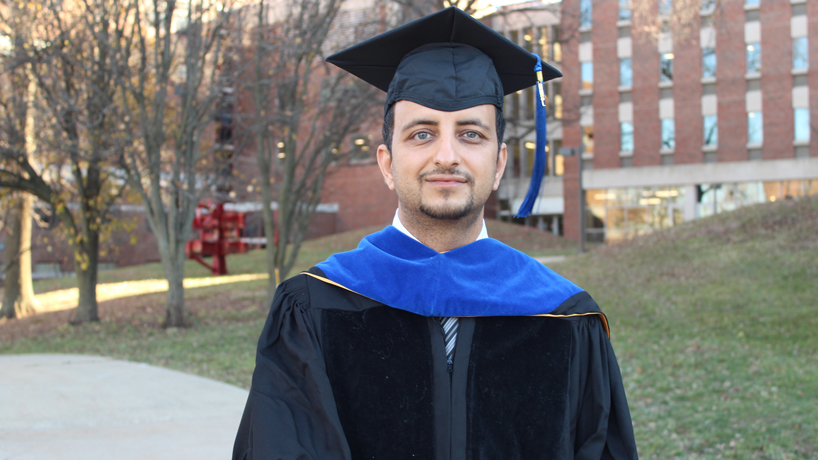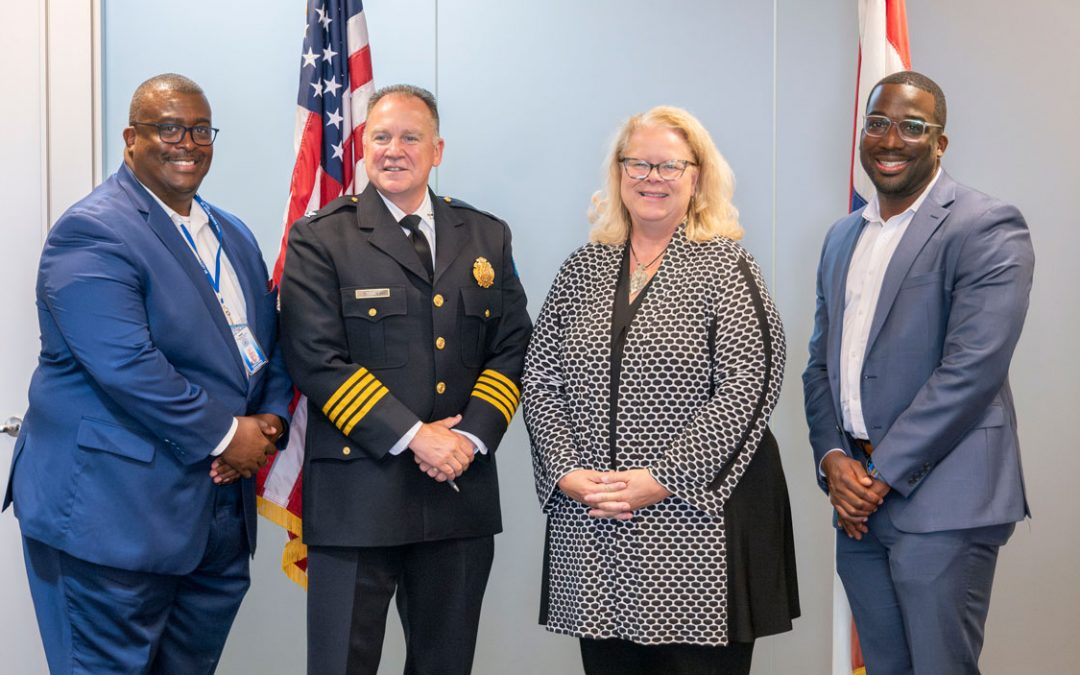
Dharmendra Neupane’s PhD research at UMSL focused on nanoporous gold’s applications in medicine and biotechnology, and since successfully defending his dissertation in 2020, he is continuing similar research at the Food and Drug Administration’s Center for Biologics Evaluation and Research. (Photo courtesy of Dharmendra Neupane)
Sometimes big solutions come in small packages.
Dharmendra Neupane knows that better than anyone after fabricating nanoporous gold in Professor Keith Stine’s chemistry lab at the University of Missouri–St. Louis.
The material is a type of permeable nanostructure, measuring a billionth of a meter, and it could be the answer to more effective cancer treatments.
Neupane’s PhD research at UMSL focused on its applications in medicine and biotechnology, and since successfully defending his dissertation in 2020, he is continuing similar research at the Food and Drug Administration’s Center for Biologics Evaluation and Research.
The ability to use chemistry for cross-disciplinary solutions is what attracted Neupane to the field.
“Chemistry and biochemistry are the center of every science,” he says. “We can understand physics, microbiology or biology with chemistry.”
Neupane began his academic career in his native Nepal, earning a bachelor’s and a master’s at Tribhuvan University. After teaching high school and college chemistry for a few years, he decided to apply to doctoral programs.
Several of his friends studied at UMSL, and their experiences encouraged him to apply to the university. Neupane was accepted to the PhD program in chemistry and biochemistry in 2015.
The transition from Nepal to the U.S. was mostly smooth, except for some language and cultural differences, but Stine quickly made him feel at home in the lab.
“He let us have freedom about choosing research topics and conducting research,” Neupane says. “He let us participate in different seminars in St. Louis, as well as outside of Missouri, and he was ready to answer questions and solve problems.”
Neupane’s work focused on using nanoporous gold to encapsulate and steadily release anti-cancer drugs in tumorous regions of the body. This approach shows promise to overcome persistent challenges in cancer treatments.
Cancer drugs can kill healthy cells as they treat the disease, and many are insoluble in water, making them difficult to absorb in the body.
Neupane was able to more effectively target cancerous cells and improve solubility by using nanostructures in combination with macromolecules – large, complex molecules made up of smaller subunits – designed to aid the delivery of drugs.
“The side effects of the drug can be minimized, and we can enhance the tolerability,” Neupane says.
He is excited to begin a new vaccine development project during his one-year fellowship at the FDA. During his PhD research,
Neupane also became interested in glycoconjugates and glycans, carbohydrates linked to other biological molecules, and their potential for therapeutic use.
Vaccines might be one of the most encouraging, transformative applications.
“I was very interested to impart my knowledge and the skill I earned during my PhD in the field of glycans in the field of deep science, with immediate and life-changing outcomes,” he says. “I am very excited to conduct fruitful research.”
This story was originally published in the spring 2021 issue of UMSL Magazine. If you have a story idea for UMSL Magazine, email magazine@umsl.edu.














